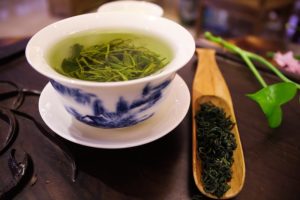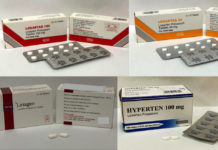With half the world’s population on some form of lockdown due to the Covid-19 pandemic, gyms are closed and in some countries, people are not even allowed to go outside for a run. As a result, many of us are finding it difficult to maintain a healthy lifestyle and weight.
The 2 pillars of a successful weight loss program are exercise, and diet. While outdoor activities may not be possible now, there are many home based exercises you can consider. Diet, on the other hand becomes even more critical during this time. Here are some superfoods, which have been proven to help you lose weight. The foods recommended here are easy to find locally. I have been consuming lots of them during the Covid-19 lockdown!
1. Bananas

Bananas top my list of superfoods for weight loss because they are so readily available and affordable. Bananas are a good source of fiber, vitamin B6, vitamin C, and phytonutrients. One bananas contains only 120 calories, but it makes you feel full due to its high fiber content. Despite its high sucrose and glucose content, it has a relatively low glycemic index (GI) of 40-50. Choose green bananas as they contain more resistant starch. These do not get digested and pass through to your colon where it feeds your gut bacteria.
How To Eat:
Eat it by itself as part of breakfast, or blend it into a smoothie with yoghurt, berries and peanut butter.
2. Almonds

Almonds are low in carbs, and an excellent source of fiber, monounsaturated fats, Vitamins E and antioxidants. They may even assist in blood sugar control and lower blood cholesterol levels. Almonds make us feel fuller, and hence eat less. It has been shown that almonds assist in weight loss better than complex carbohydrates in a weight loss program (1). They are second on my list because we spend more time watching TV during lockdowns, which means we tend to reach for snacks more. Choosing almonds over potato chips can make of break your weight loss program!
How to Eat:
In front of the TV. Snack on almonds instead of potato chips. Eat with skin intact as most of the nutrients are concentrated there. Choose unsalted almonds.
3. Berries – Blueberries, Strawberries

Berries are one of the most anti-oxidant rich foods around. Blueberries, in particular have an Oxygen Radical Absorbance Capacity (ORAC) value or 2400 – the highest amongst berries. They are low in calories, and high in vitamins A, C, K, manganese, fiber, and polyphenols. They high fiber makes you feel fuller and eat less. They may have also have beneficial effects on blood sugar levels and insulin resistance (2).
How to eat:
While fresh berries are not as readily available in Singapore, consider purchasing frozen berries from the supermarket, and adding them into a smoothie.
4. Avocados

Avocados are incredibly rich in nutrients and beneficial calories. They are a good source of Vitamin B5, B6, C, E, K, folate and fiber. A medium avocado contains 320 calories, of which 30g are in the form of heart-healthy, monounsaturated fats. They make you full so that you will consume less other foods. Avocado consumption is associated with improved overall diet quality, nutrient intake, and reduced risk of metabolic syndrome(3).
How to eat:
Add them to your salad, or make an avocado shake for a meal.
Blend together: 1 avocado, 300ml of milk, and add a sweetener (e.g. Aspartame) of your choice for taste.
5. Kai Lan (Chinese Kale)

Leafy vegetables are low in calories and load with fiber, antioxidants, vitamins and minerals. They make you feel full, making them perfect for losing weight.
In particular, Kai Lan, or Chinese Kale, deserves special mention – it is readily available locally, and does not cost as much as the usual recommendations such as kale and spinach. One cup of Kai Lan only contains 16 calories, and is high in vitamins A, B9 and B2, C, K, manganese, calcium, potassium, and magnesium. Kai lan’s numerous antioxidants include glucosinolates (with anti-cancer properties) and phenolic compounds (antioxidant, anti-inflammatory, antimicrobial, antiallergic and anticarcinogenic capacities) (4)
How to eat:
Stir fry with garlic and mushrooms. Alternatively, you can simply boil it and add oyster sauce – this is my favourite way of eating it!
6. Spinach

Spinach has long been known to help with weight loss. It is low in calories ( only 7 calories in a cup), and contains many vitamins and minerals. The phytochemicals and bioactives in spinach are able to scavenge reactive oxygen species and prevent macromolecular oxidative damage, modulate expression and activity of genes involved in metabolism, proliferation, inflammation, and antioxidant defence, and curb food intake by inducing secretion of satiety hormones. We feel fuller after eating spinach. Hence, it has anti-cancer, anti-obesity, sugar-lowering and cholesterol-lowering properties (5).
How to eat:
Raw, in a salad
7. Green Tea

Green tea is, without a doubt, the best beverage for weight loss. It has been shown to not only decrease body weight, but maintain the weight loss (6). These effects are largely due to a cathechin called epigallocatechin gallate (EGCG). Green tea also improves our brain functions, protects us against some cancers, and lowers our risk of heart disease. This is one superfood you want to include as a regular part of your diet!
How to drink:
Drink 2-4 cups a day, without any added sugar.
8. Olive Oil

Olive oil is one of the healthiest cooking oils you can use.
Olive oil contains mostly monounsaturated fats, especially oleic acid. It is the main oil found in the Mediterranean diet, and recent studies even find that a diet high in olive oil does not lead to weight gain compared to a low fat diet. This makes it an excellent oil to cook with if you want to lose weight. It has been shown to reduce body fat composition, and improve blood pressure (7). It contains powerful anti-oxidants, which may protect us against strokes and heart disease.
How to eat:
Drizzle extra virgin olive oil over your salad, or cook with it. Not all olive oils are suitable for cooking – choose pure olive oil for cooking as it has a higher smoke point.
9. Kefir

Not everyone may be familiar with kefir. It has gained popularity over the past few years as an even healthier alternative to yoghurt. It looks and tastes very much like yoghurt. In addition to being low in carbohydrates and high in proteins and fats, kefir has many other beneficial biologic compounds.
Kefir is a rich and diverse source of probiotics, much more potent than yoghurt. Hence, they are great for balancing our gut bacteria, and improving digestive problems such as irritable bowel syndrome and diarrhea (8). It has been shown to have anti-bacterial, anti-fungal properties. Kefir also has significant anti-tumor activity against multiple cancer cell types, and may help lower cholesterol, and improve asthma and allergic symptoms (9). This is a superfood you don’t want to miss, not only for losing weight, for for overall health!
How to eat:
You first have to make your own. Start with kefir grains (available as a starter kit, or get it from your friends who are making kefir). Once you have fermented your kefir, eat it with fruits, or blend it with some fruits as a smoothie.
10. Oats & Oatmeal

You will be surprised to know that oats are one of the healthiest grains you can find. Oats give us numerous health benefits, including weight loss, decreased blood sugar levels and protection against heart disease.
Oats have more protein and fat than most other grains. It contains lots of soluble fiber, in particular beta-glucan, which partially dissolves in water and forms a thick, gel-like solution in our intestines when we consume it. The beta-glucan makes us feel full (10), and balances the bacteria in our gut, keeping us healthy. Oats also contain an antioxidant known as Avenanthramides, which help lower blood pressure (11).
How to eat:
As breakfast, or supper when you feel hungry at night. Add some fruits such as strawberries to make your meal even healthier.
References:
- Int J Obes Relat Metab Disord. 2003 Nov;27(11):1365-72. Almonds vs complex carbohydrates in a weight reduction program
- Antioxidants (Basel). 2016 Dec; 5(4): 44. Blueberries’ Impact on Insulin Resistance and Glucose Intolerance
- Nutr J. 2013; 12: 1. Avocado consumption is associated with better diet quality and nutrient intake, and lower metabolic syndrome risk in US adults: results from the National Health and Nutrition Examination Survey (NHANES) 2001–2008
- Molecules. 2017 Aug; 22(8): 1262. Evaluation of the Nutritional Quality of Chinese Kale (Brassica alboglabra Bailey) Using UHPLC-Quadrupole-Orbitrap MS/MS-Based Metabolomics
- Food Funct. 2016 Aug 10;7(8):3337-53. doi: 10.1039/c6fo00051g. Functional properties of spinach (Spinacia oleracea L.) phytochemicals and bioactives.
- Int J Obes (Lond). 2009 Sep;33(9):956-61. doi: 10.1038/ijo.2009.135. Epub 2009 Jul 14. The effects of green tea on weight loss and weight maintenance: a meta-analysis.\
- Eur J Nutr. 2018 Oct;57(7):2445-2455. doi: 10.1007/s00394-017-1517-9.Consumption of extra virgin olive oil improves body composition and blood pressure in women with excess body fat: a randomized, double-blinded, placebo-controlled clinical trial.
- PLoS One. 2012;7(4):e34938. doi: 10.1371/journal.pone.0034938. A meta-analysis of probiotic efficacy for gastrointestinal diseases.
- Front Microbiol. 2016; 7: 647.The Microbiota and Health Promoting Characteristics of the Fermented Beverage Kefir
- Atherosclerosis. 2006 Jun;186(2):260-6. Epub 2005 Sep 1. Avenanthramide, a polyphenol from oats, inhibits vascular smooth muscle cell proliferation and enhances nitric oxide production.
- Nutr J. 2014 May 28;13:49. doi: 10.1186/1475-2891-13-49.The role of meal viscosity and oat β-glucan characteristics in human appetite control: a randomized crossover trial.


















